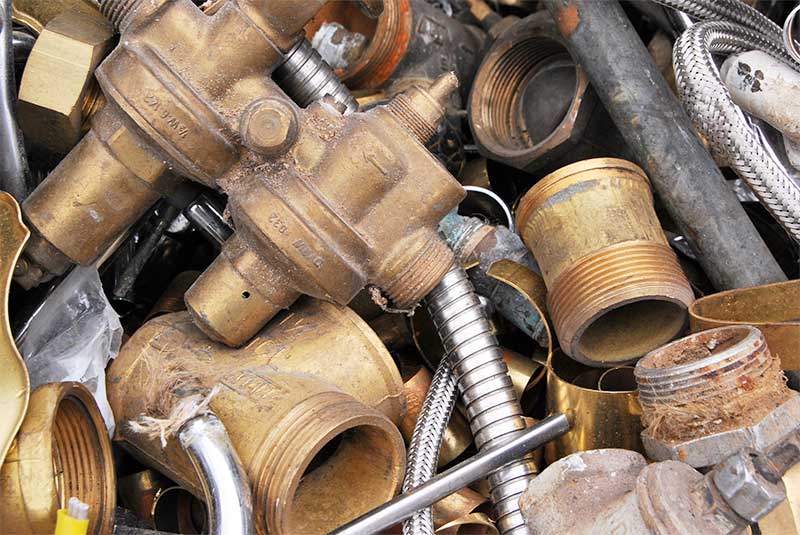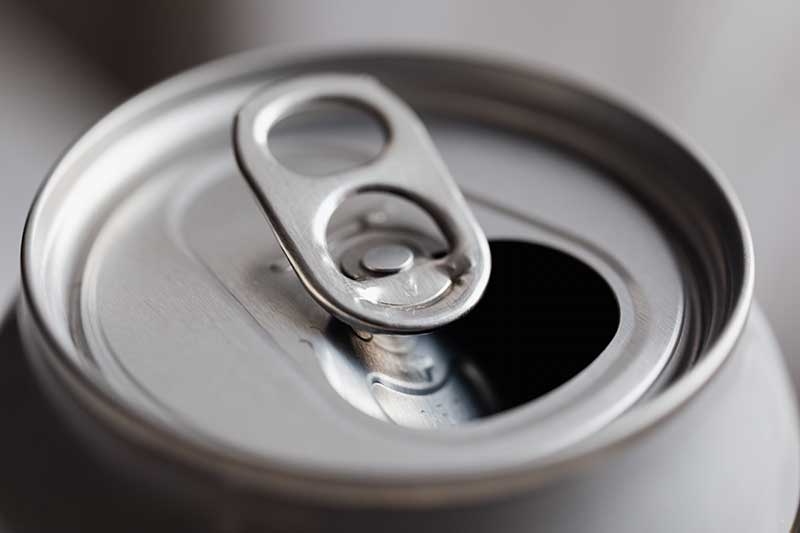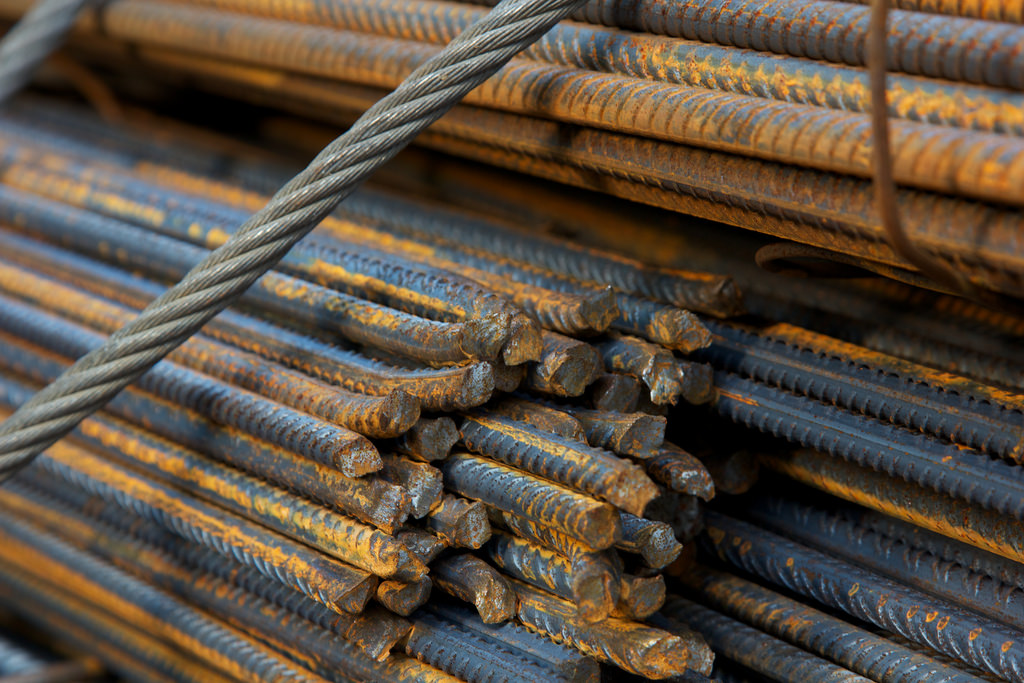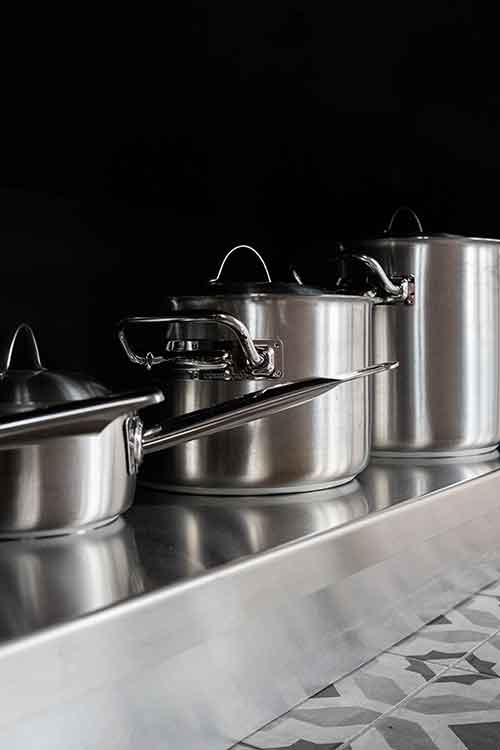In the realm of metal recycling, understanding the distinctions between various types of metal scrap is crucial. Each metal has unique properties that make it suitable for specific industry applications. In this article, we delve into the differences between copper, brass, aluminum, steel, and stainless-steel scrap, along with their respective uses.
1. Copper Scrap:
Copper scrap holds a special place in the world of metals due to its exceptional conductivity and corrosion resistance. As a result, copper scrap finds its way into numerous applications, including:
- Electrical Wiring and Components: Copper’s high electrical conductivity makes it indispensable in electrical wiring, cables, and various electronic components.
- Plumbing Fixtures: Its corrosion resistance and malleability make copper scrap ideal for plumbing fixtures, pipes, and fittings, ensuring longevity and reliability in residential and commercial settings.
- Heat Exchangers: Copper scrap is utilized in heat exchangers and HVAC systems, where its thermal conductivity facilitates efficient heat transfer.
- Artwork and Decorative Items: With its distinct reddish hue and malleability, copper scrap is often transformed into decorative items, sculptures, and architectural accents, adding aesthetic value to diverse settings.

2. Brass Scrap:
Brass, an alloy of copper and zinc, possesses a unique blend of properties that make it suitable for various applications. Brass scrap is commonly used in:
- Plumbing Fixtures and Valves: Brass scrap is prized for its corrosion resistance and machinability, making it a preferred material for plumbing fixtures, valves, and connectors.
- Musical Instruments: Brass scrap is a staple in the production of musical instruments such as trumpets, trombones, and saxophones, owing to its acoustic properties, durability, and aesthetic appeal.
- Decorative Hardware: Brass scrap is frequently employed in decorative hardware such as doorknobs, hinges, and handles, lending a touch of elegance to homes and furniture.
- Marine Applications: Brass scrap’s corrosion resistance makes it well-suited for marine hardware, boat fittings, and ship components, enduring the harsh conditions of marine environments with resilience.

3. Aluminum Scrap:
Aluminum scrap is renowned for its lightweight nature, corrosion resistance, and recyclability. It finds extensive use in various sectors, including:
- Transportation Industry: Aluminum scrap is widely utilized in the automotive, aerospace, and marine sectors for vehicle bodies, aircraft components, and boat hulls, offering fuel efficiency and structural integrity.
- Packaging and Containers: Aluminum scrap is favored for packaging materials such as cans, foils, and containers, providing durability and protection while remaining lightweight and recyclable.
- Construction Materials: Aluminum scrap is incorporated into construction materials such as window frames, doors, and roofing panels, contributing to energy-efficient and sustainable building solutions.
- Consumer Electronics: Aluminum scrap is prevalent in consumer electronics, laptops, smartphones, and appliances, owing to its conductivity, durability, and aesthetic appeal.

4. Steel Scrap:
Steel scrap, known for its strength, durability, and versatility, serves as the backbone of numerous industries, including:
- Construction and Infrastructure: Steel scrap is essential in construction for structural components, reinforcement bars (rebar), and roofing materials, ensuring strength, stability, and resilience in buildings and infrastructure projects.
- Automotive Manufacturing: Steel scrap is a primary material in vehicle manufacturing for body panels, chassis, and engine components, offering crash resistance, durability, and cost-effectiveness.
- Machinery and Equipment: Steel scrap is integral to machinery, equipment, and tools across various industries due to its durability, machinability, and resistance to wear and corrosion.
- Packaging and Transportation: Steel scrap is used in packaging materials, transportation vehicles, railways, and shipping containers, providing strength, security, and reliability in the movement of goods and materials.

5. Stainless Steel Scrap:
Stainless steel scrap, celebrated for its corrosion resistance and hygiene properties, finds application in diverse sectors, including:
- Food Processing and Pharmaceutical Industries: Stainless steel scrap is the material of choice for equipment, surfaces, and utensils in food processing, pharmaceutical manufacturing, and medical facilities, ensuring cleanliness, safety, and compliance with industry standards.
- Kitchenware and Appliances: Stainless steel scrap is ubiquitous in kitchenware, cookware, and appliances due to its durability, heat resistance, and sleek appearance, enhancing both functionality and aesthetics.
- Architectural Applications: Stainless steel scrap adorns architectural elements such as building facades, cladding, and handrails, imparting modernity, durability, and corrosion resistance to architectural designs.
- Automotive Exhaust Systems: Stainless steel scrap is utilized in automotive exhaust systems and mufflers for its corrosion resistance, high-temperature performance, and longevity, ensuring compliance with emissions regulations and prolonging the lifespan of exhaust components.

Among these various metals, copper stands out as one of the most sought-after due to its exceptional conductivity, versatility, and widespread application across industries. Its indispensable role in electrical wiring, plumbing, electronics, and heat transfer systems makes it highly coveted in manufacturing. Additionally, copper’s recyclability further enhances its value, as recycled copper retains its quality and properties, reducing the need for virgin ore extraction and minimizing environmental impact. As such, copper scrap commands significant attention in the metal recycling market, driving innovation and investment in sustainable resource management practices. Its economic importance, combined with its intrinsic properties, solidifies copper’s position as the metal of choice for many industrial applications, making it a cornerstone of the global metal economy.
In conclusion, the distinct properties of copper, brass, aluminum, steel, and stainless-steel scrap determine their diverse applications across industries. As these metals continue to play pivotal roles in modern manufacturing, their efficient recycling and utilization contribute to sustainability, resource conservation, and economic prosperity. Embracing the principles of circular economy and responsible resource management, we can harness the full potential of metal scrap to build a resilient and sustainable future.
At TM Scrap Metals, we pride ourselves on being a premier destination for all your metal recycling needs, offering comprehensive services from copper to stainless steel and beyond. With our commitment to excellence, we strive to provide our clients with top prices for their metal scrap, ensuring maximum value and satisfaction with every transaction. Our dedicated team works tirelessly to stay on top of market trends and fluctuations, enabling us to offer competitive rates that reflect the true worth of your materials. Whether you’re a small-scale recycler or a large industrial operation, you can always rely on us to deliver unparalleled service and the best prices possible. At TM Scrap Metals, your success is our priority, and we are dedicated to forging lasting partnerships built on trust, reliability, and mutual benefit.
